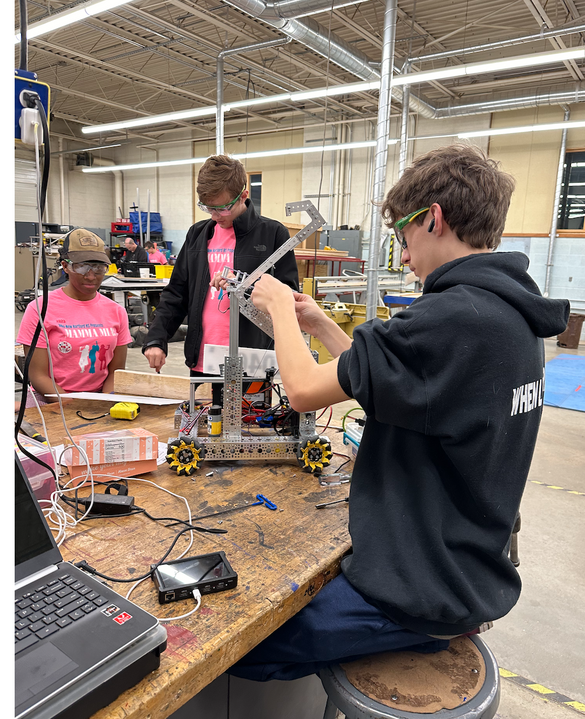
Iowa schools are finding innovative and exciting new ways to incorporate computer science education for their students at all grade levels. And based on Iowa’s recent ranking as one of the top states in the nation for computer science, the initiatives are clearly working. Opportunities to offer high-quality computer science courses and integrated curriculums are allowing classrooms across the state to better prepare the students of today for a world filled with technology.
Take, for instance, Dike-New Hartford Community School District. They have been committed to implementing different computer science learning opportunities throughout their K-12 classes and extracurricular activities. Students can get hands-on learning in computer science activities ranging from introductory level concepts to robotics to coding.
“Our district is fully committed to teaching computer science,” said Joanna Seymour, instructional coach at Dike-New Hartford. “It’s all about getting kids on-board and excited. Whether they are in first grade or in high school, you can show them how code impacts a device or a program they are working on. We teach them the algorithm, and they can see the results and really get into it.”
Integrating computer science into current curriculums has been advantageous for Dike-New Hartford’s younger students. They often learn about computer science concepts during their regular math, literacy and science lessons, and robotics have been a popular way to get students interested in further computer science activities.
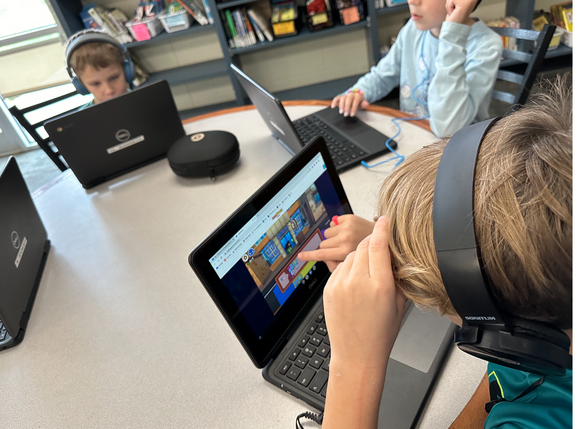
“It feels like play, but you’re building so many skills with young students,” Seymour said.
Older students in middle and high school also have an array of opportunities in computer science education at Dike-New Hartford. Coding in programs like JavaScript as well as html is offered, and students in high school have options to learn Python programming coding language or branch out and try customized computer science classes.
“We have a few students who have had a particular interest in computer science and completed independent study classes in game design, data science or cybersecurity,” Seymour said. “We can customize learning around a student’s skills and interest level.”
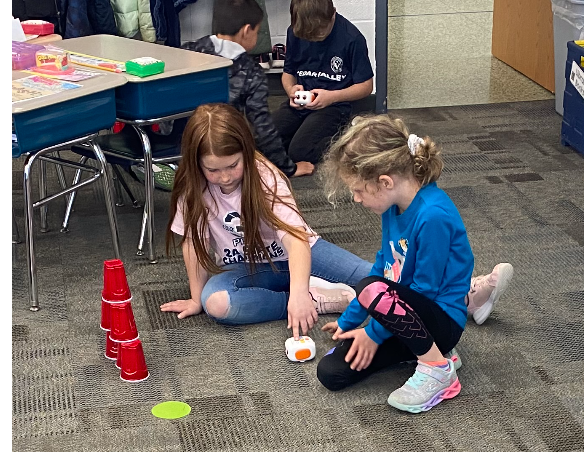
Efforts like these in Dike-New Hartford help fulfill Iowa’s requirement for providing high-quality computer science education in schools. In 2020, House File 2629 established that all accredited Iowa high schools provide at least one computer science course by the 2022-23 school year. Middle schools also must now offer computer science instruction in either seventh or eighth grade, and elementary schools must offer it in at least one grade.
“Iowa school districts have been working hard to implement the new computer science education requirement, which is now in full effect across the state,” said Justin Lewis, computer science education consultant for the Iowa Department of Education. “Schools have made computer science a priority, and we will continue to support their efforts to ensure students are well-prepared to navigate a computer science landscape.”
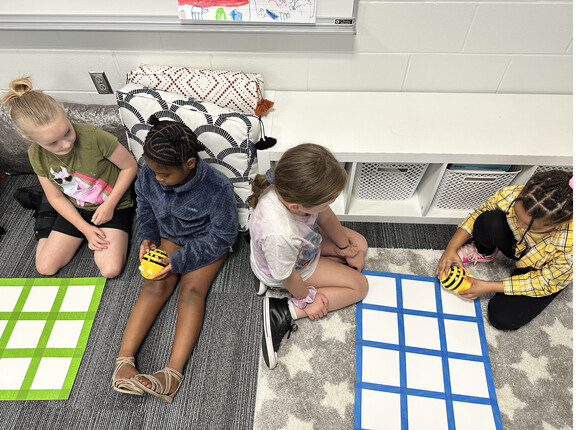
Sponsored by the Department, school districts have taken advantage of grant opportunities that promote the implementation of computer science education. Past grant funding through the Department and the Iowa Governor’s STEM Advisory Council has supported equipment and material purchases as well as professional development and intensive training for teachers.
“Professional development for computer science has been very important for our teachers,” said Peggy Murphy, director of technology at Marion Independent School District. “We have provided our own district trainings and had 15 teachers attend this year’s Computer Science Professional Development (CSPD) Week at the University of Northern Iowa. These hands-on trainings have been beneficial in getting teachers comfortable with computer science.”
CSPD Week is a five-day, immersive training with computer science experts and leading teachers in the field. Teachers from across the state who work with computer science education participated in the Department-funded training at minimal cost.
Marion second grade teacher Melissa Cahalan attended this year’s CSPD Week and was able to apply the tools and information she received at the training into her classroom.
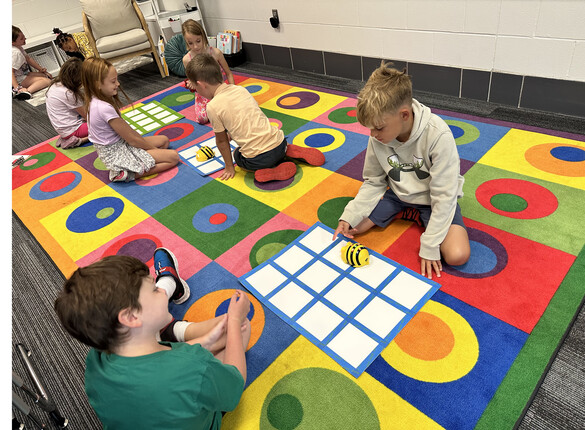
“It was great to be there with other teachers and K-2 colleagues and brainstorm on how we could use these computer science tools with our kids,” she said. “It really got us teachers excited, and we brought that excitement along with new techniques back to our classrooms.”
Incorporating computer science education particularly into elementary classrooms has been a priority at Marion. In K-2 grade levels, they’ve used several activities like Bee-Bots, a programmable robot program, and other activities to help students explore computer science and learn more about place value, sequential order, computer science vocabulary, debugging techniques and more. Similar to Dike-New Hartford, many of these opportunities are integrated into other core lesson plans and are fun learning activities, made to engage young minds.
“Computer science doesn’t just mean computers,” Cahalan said. “Our activities may include PlayDoh and wiring in first grade or Lego robotics in second grade. It gives students a chance to see computer science in many different ways.”
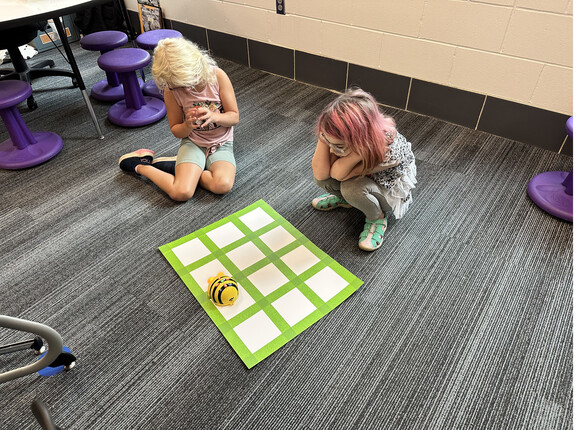
Additionally, grades 3-4 at Marion have a dedicated computer science instructor, and a variety of computer science learning is offered to students. Activities have included Hello Ruby Adventures in Coding books and lessons on digital citizenship, computing systems and data analysis.
Both Marion and Dike-New Hartford offer robotics and Lego League teams as extracurricular activities for students who want to further apply their computer science skills to competitions. This can offer opportunities for students to not only strengthen their computer science acumen but also other professional skills.
“Quality computer science education is more than just technical skills,” Seymour said. “It can help develop problem-solving skills, communication and teamwork abilities, which are vital for success in any role.”
High-quality computer science education opportunities are expected to continue growing over the next few years at Iowa schools. And with districts like Dike-New Hartford and Marion leading the way, the future looks bright for Iowa’s students.
“By having strong computer science skills, students can truly own their futures,” Murphy said. “Computer science will help our students be future-ready, whether it’s in a career right out of high school, a training program within the computer science industry or in a two- or four-year degree program in college. Computer science is where it’s at.”
